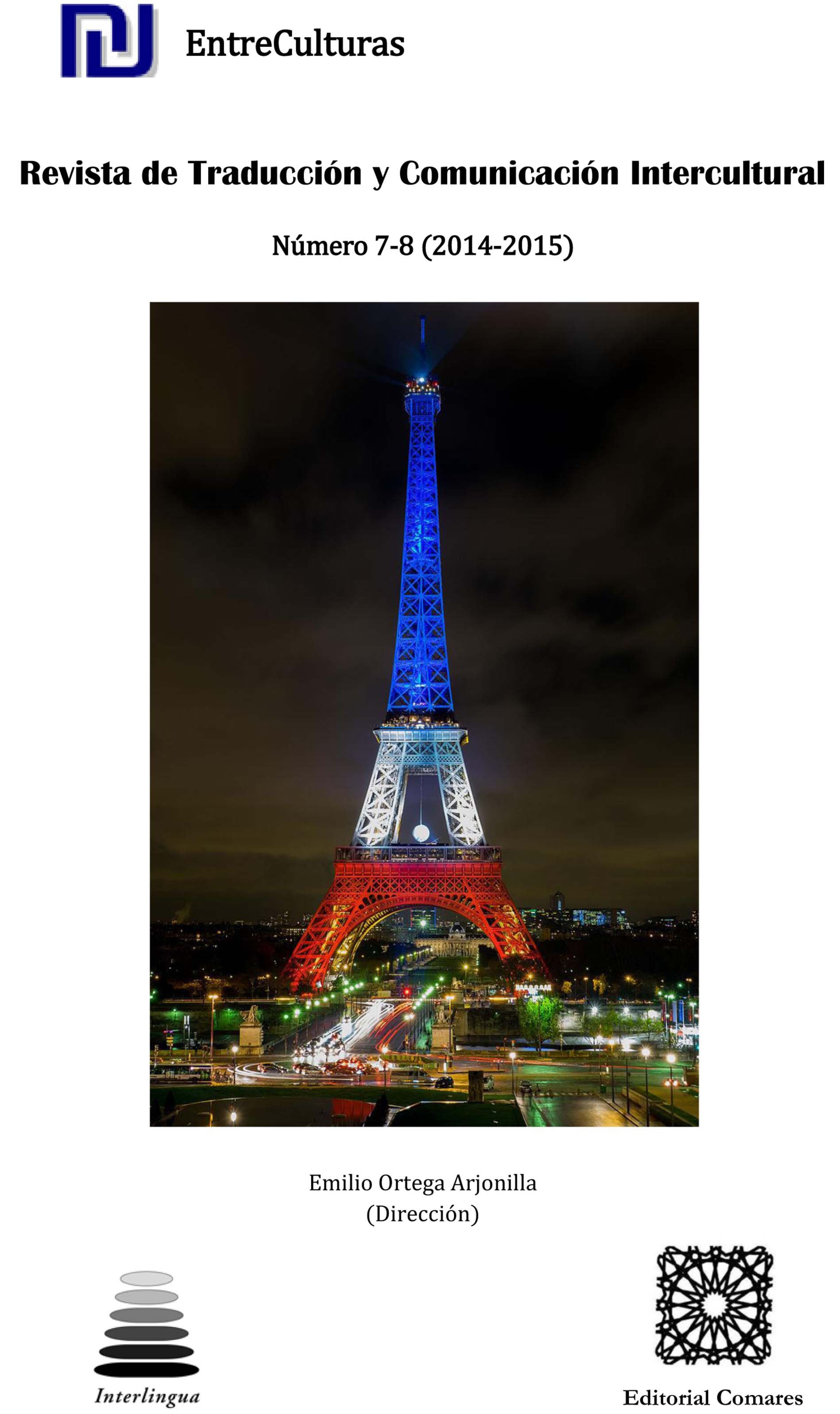INTRODUCING MACHINE TRANSLATION IN TRANSLATOR TRAINING: COMPARING “INFORMATION MINING” WITH POST-EDITING
DOI:
https://doi.org/10.24310/Entreculturasertci.vi7-8.11333Keywords:
machine translation, translator training, translator competence, translation technologies, documentationAbstract
This paper presents the results of an experiment to introduce translation students to statistical machine translation (SMT) by comparing post-editing it with using traditional documentation methods (“information mining”). At the beginning of an introductory course on translation technologies, the students translated a text in English or Spanish and annotated instances where the use of a particular electronic reference tool that they previously learned about helped them hand-pick a suitable translation solution. At the end of the course, the students revisited the same text and selected passages they had spent considerable time and effort translating, as evidenced by their annotations. They fed these passages into the open-domain SMT system Google Translate (GT) and then post-edited the output. This paper compares the students’ annotated hand-picked translation solutions with the corresponding unedited GT ones (to assess differences in quality) and with the post-edited renditions of GT’s solutions (to analyze whether the students’ decisions to accept or reject the MT solutions resulted in quality gains or losses). According to the results, the quality of the unedited MT solutions was on average just below that of the students’ own solutions, and post-editing resulted in a slight average increase in quality when compared with information mining.
Downloads
Metrics
References
Désilets, A. et al. (2008). “WeBiText: Building Large Heterogeneous Translation Memories from Parallel Web Content” en las Proceedings of Translating and the Computer (30). Londres, 23-28 de noviembre de 2008.
Ferraresi, A. (2009). “Google and Beyond: Web-As-Corpus Methodologies for Translators”, Revista Tradumática, 7.
Forcada, M. (2010). “Machine Translation Today” en Gambier, Y. y L. V. Doorslaer (eds.): Handbook of Translation Studies Volume 1, 215-223. Ámsterdam/Filadelfia, John Benjamins.
Garcia, I. (2010). “Is Machine Translation Ready Yet?”, Target, 22(1), 7-21.
Garcia, I. (2011). “Translating by Post-Editing: Is it the Way Forward?”, Machine Translation, 25, 217-237.
Koehn, P. (2010). Statistical Machine Translation. Nueva York, Cambridge University Press.
Lee, J. y P. Liao (2011). “A Comparative Study of Human Translation and Machine Translation with Post-Editing”, Compilation and Translation Review, 4(2), 105-149.
Pym, A. (1992). “Translation Error Analysis and the Interface with Language Teaching” en Dollerup, C. y A. Loddegaard (eds.): Teaching Translation and Interpreting: Training, Talent and Experience, 279-288. Ámsterdam/Filadelfia, John Benjamins.
Pym, A. (2009). “Using Process Studies in Translator Training: Self-Discovery through Lousy Experiments” en Göpferich, S, Alves, F. y I. Mees (eds.): Methodology, Technology and Innovation in Translation Process Research, 135-156. Copenhague, Samfundslitteratur.
Quah, C. (2006). Translation and Technology. Nueva York, Palgrave Macmillan.
?ahin, M. y N. Dungan (2014). “Translation Testing and Evaluation: a Study on Methods and Needs”, Translation & Interpreting, 6(2), 67-90.
Downloads
Published
How to Cite
Issue
Section
License
All contents published in Entre culturas. Revista de traducción y comunicación intercultural are protected under the Creative Commons Attribution-NonCommercial-ShareAlike 4.0 International (CC BY-NC-SA 4.0) license. All about this license is available in the following link: <http://creativecommons.org/licenses/by-nc-sa/4.0>
Users can copy, use, redistribute, share and exhibit publicly as long as:
- The original source and authorship of the material are cited (Journal, Publisher and URL of the work).
- It is not used for comercial purposes.
- The existence of the license and its especifications are mentioned.
There are two sets of authors’ rights: moral and property rights. Moral rights are perpetual prerogatives, unrenounceable, not-transferable, unalienable, imprescriptible and inembargable. According to authors’ rights legislation, Entreculturas. Revista de traducción y comunicación intercultural recognizes and respects authors moral rights, as well as the ownership of property rights, which will be transferred to University of Malaga in open access. The property rights are referred to the benefits that are gained by the use or the dissemination of works. Entreculturas. Revista de traducción y comunicación intercultural is published in an open access form and it is exclusively licenced by any means for doing or authorising distribution, dissemination, reproduction, , adaptation, translation or arrangement of works.
Authors are responsable for obtaining the necessary permission to use copyrighted images.





7.png)
